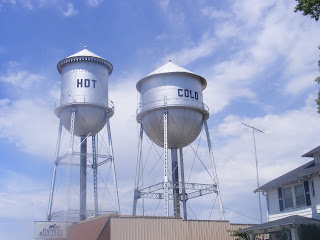Methland by Nick Reding is a book
covering the history of Meth and the effects it has had on the world, but most
specifically, small town America. For our class, we were given the
prologue and second chapter to read. In this portion of the book, Reding
discusses a general history of methamphetamine from it's
initial synthesis by a Japanese chemist, to the widespread use of it
at a prescription drug for decades. But Reding seeks not just to give a
concise history of the drug, his intent is much greater. Reding brings
the meth epidemic home, sharing the stories of those in small town America who
are affected by it's use. Users are not the only ones affected, so too
are their families, and the police officers who are charged with putting them
behind bars. the effects of meth are far reaching, and touch every aspect
of a community. Through his story, Reding seeks to explain
why methamphetamine use has become so prevalent, both because of it's
historical prescription use, and because of what the drug itself has
to offer. Meth seems, at first, to complement the American ideal of hard
work, and offers users a way to work harder, longer. But this
industriousness comes at a price.
America is still rooted in the small town. They are filled
with a sense of nostalgia, and an attitude that bad things can't possibly
happen there. But bad things do, meth does, and meth is killing small
town America. As people are struggling in an increasingly
difficult economy to survive, they come to the crossroads of Main
Street America and Methamphetamine and the choice
isn't always as clear as we imagine.
At
first I was really not looking forward to reading the provided
excerpt from Methland.
I grew up in a big city where drug usage was something that you
could find easily if you looked for it. We learned about the negative
effects of various illegal drugs in school from at least middle school onward.
I have never had any interest in what I thought of as a counterculture.
But Methland explodes
that view. Methamphetamine isn't just an inner-city, counterculture
problem, it is a wide spread cancer that is eating away at the American dream.
Meth culture has become a subculture, a way of life for those who have
been drawn in by it. And not just for users, but for everyone in their
lives. It touches all of us. After living in the big city while
growing up, I moved to semi-rural Ohio. This is the small town world that
Reding seeks to put on the map, the world that is being forgotten, and a world
in which meth use is very real, and devastating. Between there and living
where I do now, I live in Navajo county Arizona, which at the time (2005-6) was
considered the county with the highest per capita meth use in the country.
Reding struck a chord with me when he wrote of meth seeming to follow
him, but that he discovered that it was actually already everywhere.
 |
| G. Whittaker 7-2009 |
We
have an upcoming paper for my class regarding the book Winter's Bone about which I recently posted. The
book Methland will be a great resource for this paper because of the perspective
it provides. While Winter's
Bone seeks to tell some of the same kind of tale, it doesn't go
into the kind of depth that Reding's work does. The descriptions he gives
of the meth experience. How Methamphetamine affect the body,
how they are made, and what that high is like, are all elements of Reding's
book that add a completely new level of understanding to Winter's Bone and
the characters. Through Reding's graphic description of how a man he
spent time with was melted in a meth lab fire, we understand the character
Teardrop better. We get a better understanding for how truly
gripping the addiction is when this man, despite immense physical disfiguring
and resulting handicap, manages to still smoke methamphetamine.
Reding discusses how his eyes were opened to the presence of
meth in his hometown, but for Ree Dolly meth has always been there. Just
like with an other culture, understanding more of the depth of what is going on
helps to contextualize and understand more detailed elements of the experience.
Reding's work thus, provides a level of understanding not only for the
context of Winter's
Bone itself,
but for Woodrell's own life, and how he used that in writing his fictional
work.
Works
Cited:
Reding,
Nick. Methland.
New York: Bloomsbury. 2009. Print.
Woodrell,
Daniel. Winter's
Bone. New York: Back Bay Books.2006. Print.

I think this is a great resource to use. And it's really helpful because the resource was given to us. I choose not to use this one for my essay and found 2 others that I wanted to use. But it looks like you got a really good understanding of this book and we able to apply it to Winter's Bone very well. Good job and good luck on your essay.
ReplyDeleteGreat Job! I especially liked how you were specific about how this would be a great source. You mentioned how the real life experiences of the author would give us a better understanding of the circumstances faced by the characters in Winter's Bone.
ReplyDeleteKeep up the Good work!
Daniel